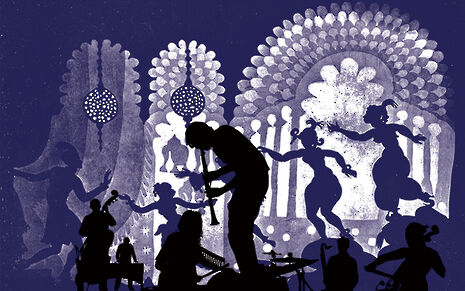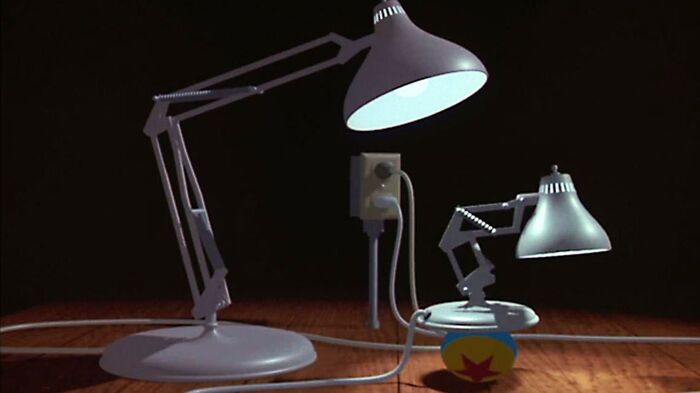Zoetrope: Adventures in the beginning
Ian Wang brings us the story of the world’s first animated feature, far from the sunny studios of Walt Disney

When thinking about the history of the animated feature film, it is easy to imagine Walt Disney as the pioneer. The legendary animation magnate produced his first feature in 1937 with Snow White and the Seven Dwarfs, and Disney films completely dominated the animated feature market for decades to come. But to look for the first ever animated feature, we have to go far from Disney’s sunny California headquarters, and go way across the pond to 1920s Weimar Germany, as a twenty-something woman, working by herself in an avant-garde film studio, created a work of art both mesmerising and wholly unique.
Lotte Reiniger probably was not consciously trying to invent an entirely new style of animation when she developed the silhouette technique used in that landmark first animated feature, 1926’s The Adventures of Prince Achmed. Reiniger’s style was instead influenced by the shadow puppet shows of her childhood. A staple form of entertainment in many Asian countries, Reiniger learned about the style in school and it became a passion of hers, spurring her to put on her own shadow plays and even build a puppet theatre.
“Each tiny movement catching one’s eye and making the whole film feel more alive”
Reiniger’s childhood hobby turned into a career many years later when, inspired by a lecture given by expressionist director Paul Wegener on special effects in films, she made it her mission to meet Wegener and try to enter the film industry herself. Wegener ended up giving her a job animating the intertitles of some of his films, before introducing her to fledgling experimental animation studio, the Berliner Institut für Kulturforschung. Now given the free reign to make her own films, Reiniger returned to her childhood passion, turning those early shadow plays into full-fledged theatrical shorts.
Reiniger’s mastery of this style is almost completely unrivalled. Although later directors like Michel Ocelot also used silhouettes in their work, it remains strikingly rare in the world of animation – that Reiniger managed to do it so well, so early, is even more impressive. Prince Achmed is a silent film, and effectively entirely black-and-white, but Reiniger refuses to see those as limitations, crafting an aesthetic that is at once wildly extravagant and poetically subtle. Reiniger’s art style is dense with detail, backgrounds lush with sprawling foliage and architectural flourishes. Her characters, princesses and sorcerers, wear lavish, ornamented costumes, embellished with arrays of feathers, bangles, gemstones.
These characters are extravagant not only in their appearances but, like actors in many silent films, in their behaviour as well. Although the movement of Reiniger’s cut-out figures occasionally feels a little stiff or stilted, in most cases it is comically elaborate and captivatingly dynamic. The sharp contrast of the black cut-outs with the blank backgrounds makes each movement feel that much more intense, so that the entire frame feels like a constantly shapeshifting Rorschach test, each tiny movement catching one’s eye and making the whole film feel more alive.
In some cases, this shapeshifting is literal – there is a transfixing scene towards the end of the film in which a sorcerer and a witch do battle. They leap after each other, wildly trading blows, but in the process they also change shape: when one turns into a scorpion, the other turns into a snake, or a vulture, or a dragon. It is a dazzling moment of pure visual flair, the kind of thing that is only possible in a medium as flexible as animation, and it complements the dreamlike delight of the film’s fairytale aesthetic perfectly.
Watching Prince Achmed is like entering another world. With a visual style so completely unique, and an atmosphere so mystical and arcane, it is a work of art that feels genuinely transportive, a window to a fantasy dimension that, although it is only open to the viewer for an hour, suggests a whole universe of riches to be discovered, lands to be explored, adventures to be had.
Reiniger dwelled on these kinds of fantasy environments throughout her career – some of her earliest works included adaptations of Cinderella and Sleeping Beauty – and it is an aesthetic she handles beautifully. The fact that Reiniger’s style developed out of a childhood obsession should not surprise us – watching Prince Achmed, one really gets that same sense of childlike awe that Reiniger must have felt when she first saw a shadow play, and it makes the film feel that bit more magical.
Although Reiniger remains a little-known figure in the history of animation, let alone cinema as a whole, she is certainly worth celebrating. She was a true pioneer in her field – a woman working in a vastly male-dominated industry, an animator at a time when animation was still a relatively niche medium, an artist whose style was completely unprecedented in the world of cinema. She was a true innovator, and deserves to be remembered just as much as other animation pioneers like Walt Disney
 News / Uni Scout and Guide Club affirms trans inclusion 12 December 2025
News / Uni Scout and Guide Club affirms trans inclusion 12 December 2025 News / Cambridge Vet School gets lifeline year to stay accredited28 November 2025
News / Cambridge Vet School gets lifeline year to stay accredited28 November 2025 Science / Did your ex trip on King’s Parade? The science behind the ‘ick’12 December 2025
Science / Did your ex trip on King’s Parade? The science behind the ‘ick’12 December 2025 News / Cambridge study finds students learn better with notes than AI13 December 2025
News / Cambridge study finds students learn better with notes than AI13 December 2025 News / Pembroke to convert listed office building into accom9 December 2025
News / Pembroke to convert listed office building into accom9 December 2025








